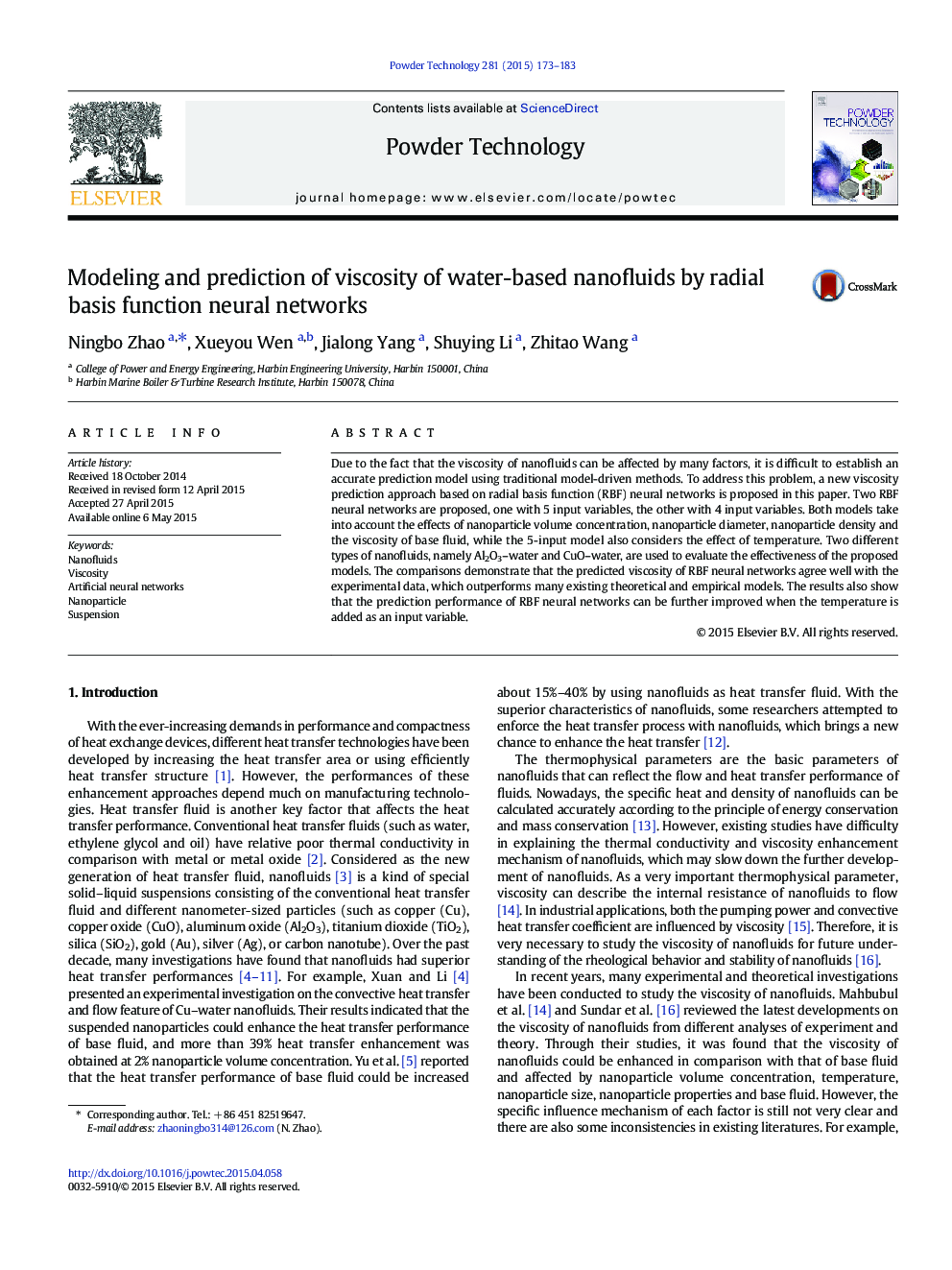| Article ID | Journal | Published Year | Pages | File Type |
|---|---|---|---|---|
| 235472 | Powder Technology | 2015 | 11 Pages |
•The authors employ RBF neural networks for the prediction of nanofluid viscosity.•Two RBF neural networks are developed and their performances have been compared.•Al2O3–water and CuO–water nanofluids are used to prove the validity of our method.•Performance of our model is compared with some theoretical and empirical models.
Due to the fact that the viscosity of nanofluids can be affected by many factors, it is difficult to establish an accurate prediction model using traditional model-driven methods. To address this problem, a new viscosity prediction approach based on radial basis function (RBF) neural networks is proposed in this paper. Two RBF neural networks are proposed, one with 5 input variables, the other with 4 input variables. Both models take into account the effects of nanoparticle volume concentration, nanoparticle diameter, nanoparticle density and the viscosity of base fluid, while the 5-input model also considers the effect of temperature. Two different types of nanofluids, namely Al2O3–water and CuO–water, are used to evaluate the effectiveness of the proposed models. The comparisons demonstrate that the predicted viscosity of RBF neural networks agree well with the experimental data, which outperforms many existing theoretical and empirical models. The results also show that the prediction performance of RBF neural networks can be further improved when the temperature is added as an input variable.
Graphical abstractFigure optionsDownload full-size imageDownload as PowerPoint slide
